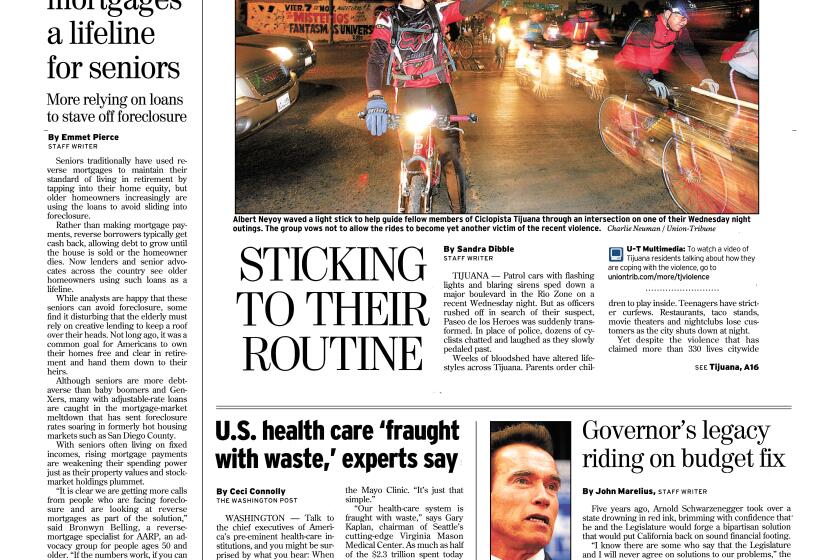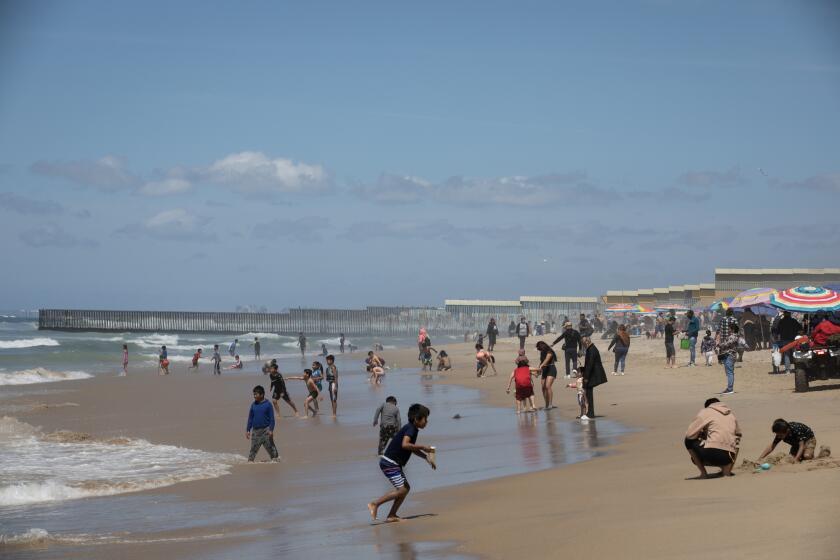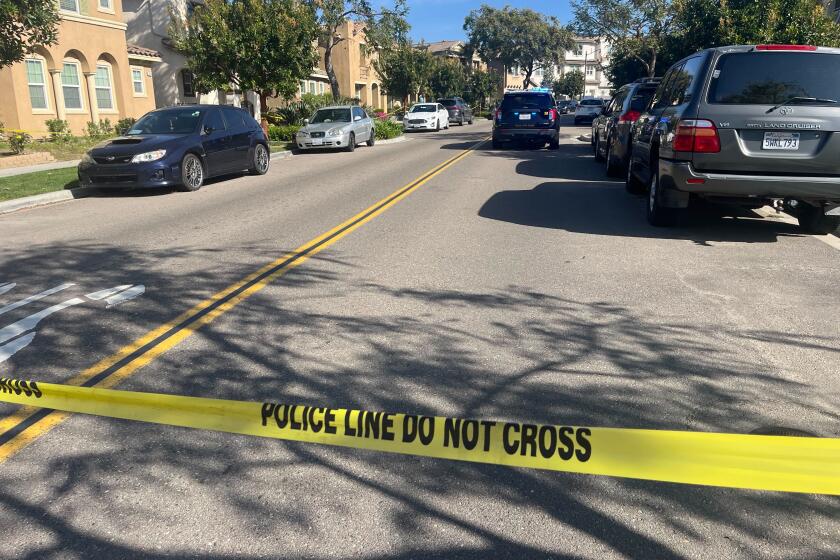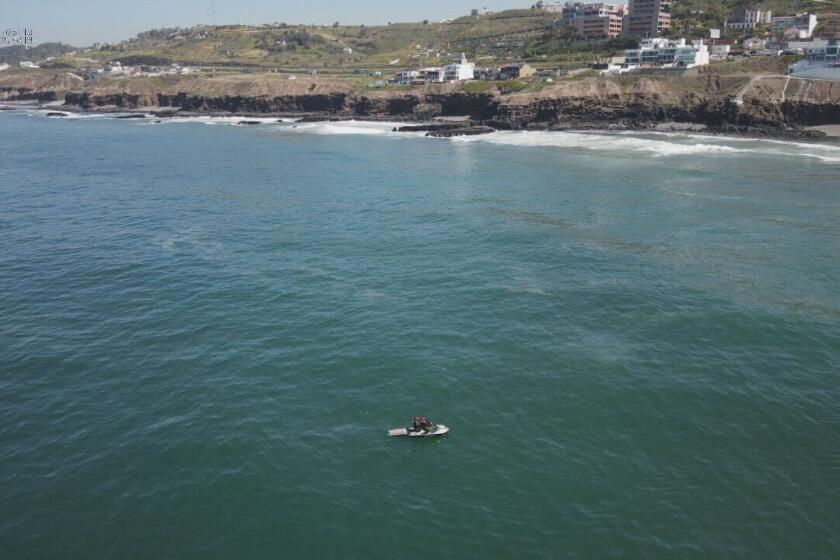Scientists track ‘pink plume’
A binational team of scientists has spent the past few weeks injecting a bright pink fluorescent dye called rhodamine into the ocean on both sides of the U.S.-Mexico border, and seeing where it is carried by waves, winds and ocean currents.
It is known as the CSIDE project, short for Cross Surfzone/Inner-shelf Dye Exchange, and funded by the National Science Foundation. Participating in the project are researchers from the UC San Diego Scripps Institution of Oceanography, Jacobs School of Engineering, as well as the Autonomous University of Baja California, Ensenada-based scientific research institution CICESE, and members of the Tijuana environmental group, Proyecto Fronterizo de Educación Ambiental.
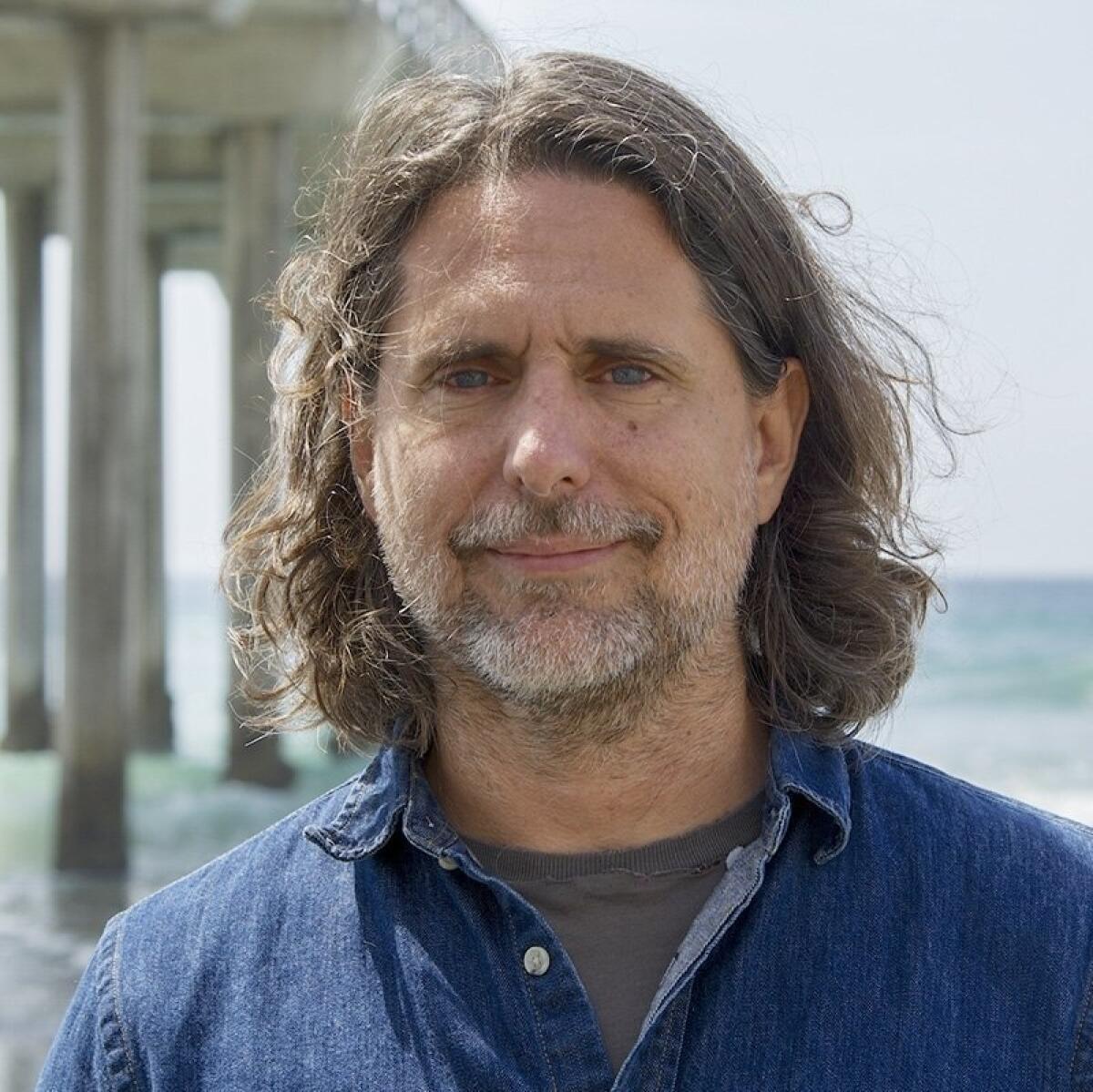
The study targets an area on both sides of the border where untreated sewage can flow into the ocean, especially when it rains, affecting water quality and leading to beach closures.
After three dye releases since Sept. 22 — two in the United States and one in Mexico — the researchers prepared to pull out their equipment on Tuesday. We caught up with Falk Feddersen, a project leader and Scripps professor, in Imperial Beach.
Q:What are you trying to find out?
A:We want to know, how does pollution get transported, and how does it get diluted.
Q:How have you set about doing this?
A:We put this fake pollution, this pink dye rhodamine, into the ocean. It’s FDA approved for use in drinking reservoirs, and it’s EPA approved. It’s not harmful to marine ecosystems. We put in about 30 gallons with each release. We have a pump and a barrel that we put on the beach. We run some hose along the sand into thigh-deep water, and we pump it out at a couple of milliliters per second. Then we follow it. We have a whole range of instruments. We have fluorometers that measure the dye concentration, an array of them from Coronado all the way down a couple of kilometers south in Playas de Tijuana.
Q: Why here?
A: This is an interesting oceanographic region, with a harbor mouth at Point Loma, an estuary, a shoal, a border region. It’s very, very complex. It also has these water quality problems that are relevant to society.
Q:Is this the first time you’ve conducted this experiment?
A:This is the third in a series of experiments. We did one in 2006 in Huntington Beach. We were interested in what does the dye do within a few hundred meters of the source. And (in Imperial Beach) in 2009, we asked what does it do within a kilometer of the source? This time, we’re interested in what it does within 10 kilometers of a source.
Q:While you still need to process the data, have you noticed anything interesting so far in these three releases you’ve conducted since Sept. 22?
A:Each time, we were astonished and surprised by the complexity of what it does, how it behaves. It’s like a rambunctious child, it doesn’t want to behave, you’re constantly surprised.
The first day that we released dye, it just made a U-turn and bolted down to Mexico. These regions are highly interconnected.
Q:How does this experiment help?
A:The standard strategy is that the county will sample, sometimes after it rains they’ll sample a bit more in Imperial Beach. It takes 24 hours to process the sample and come down and close the beach. Of course, when you close the beach, the water could be clean already.
Our five-year vision is that we have an online computer model, making predictions of plumes coming out of the (Tijuana River) estuary, or from Punta Bandera (in Mexico) or from the South Bay Ocean Outfall. That’s the long-range goal, something that the lifeguards and the communities can use. By doing this, we can make people aware how connected all these different parts of the ocean are.
sandra.dibble@sduniontribune.com • (619) 293-1716
Twitter: @sandradibble
Get Essential San Diego, weekday mornings
Get top headlines from the Union-Tribune in your inbox weekday mornings, including top news, local, sports, business, entertainment and opinion.
You may occasionally receive promotional content from the San Diego Union-Tribune.




